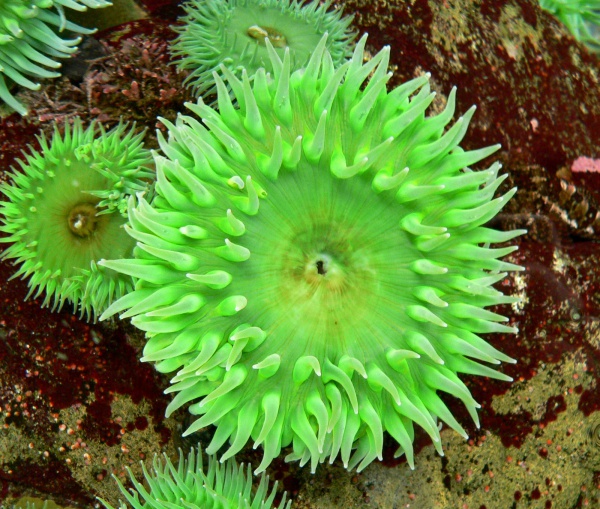Facts About Anthopleura xanthogrammica
Meet the Anthopleura xanthogrammica, commonly known as the giant green anemone. This captivating marine organism belongs to the Actiniidae family and is also referred to by several other names, including the green surf anemone, giant green sea anemone, green anemone, giant tidepool anemone, and rough anemone. You will typically find it in the low to mid-intertidal zones of the Pacific Ocean, extending from Alaska to southern California, and occasionally as far south as Panama.
The giant green anemone is a visually striking sight. It can grow up to 17.5 cm wide and 30 cm tall, with tentacles that can extend up to 25 cm in diameter. Its color varies depending on whether it is submerged, ranging from a bright green underwater to a darker green or brown when exposed to air. Its tentacles are short and conical, neatly arranged in rows around its central mouth or oral disk. These anemones prefer rocky or sandy shores where they can stay consistently wet, often inhabiting tide pools up to 15 meters deep.
One of the most remarkable aspects of the giant green anemone is its symbiotic relationship with photosynthetic algae and dinoflagellates living within its tissues. These tiny organisms perform photosynthesis, providing nutrients to the anemone and contributing to its vibrant green coloration. In terms of diet, the giant green anemone is not overly selective. It primarily feeds on dislodged mussels but also consumes sea urchins, small fish, and crabs. However, it has its own predators to contend with, including the leather sea star, nudibranchs, snails, and sea spiders.
Reproduction for these anemones occurs through external fertilization in late fall. After fertilization, the larvae disperse and eventually settle in mussel beds. While giant green anemones are generally solitary creatures, they can occasionally be found in small groups. They possess stinging cells in their tentacles, which they use for both defense and capturing prey.
To distinguish the giant green anemone from similar species such as A. elegantissima and A. sola, look for the absence of pink-tipped tentacles and striped oral disks, which are characteristic of those other species. The unique features of the giant green anemone make it a remarkable and distinctive resident of the Pacific coastline.

 Mexico
Mexico